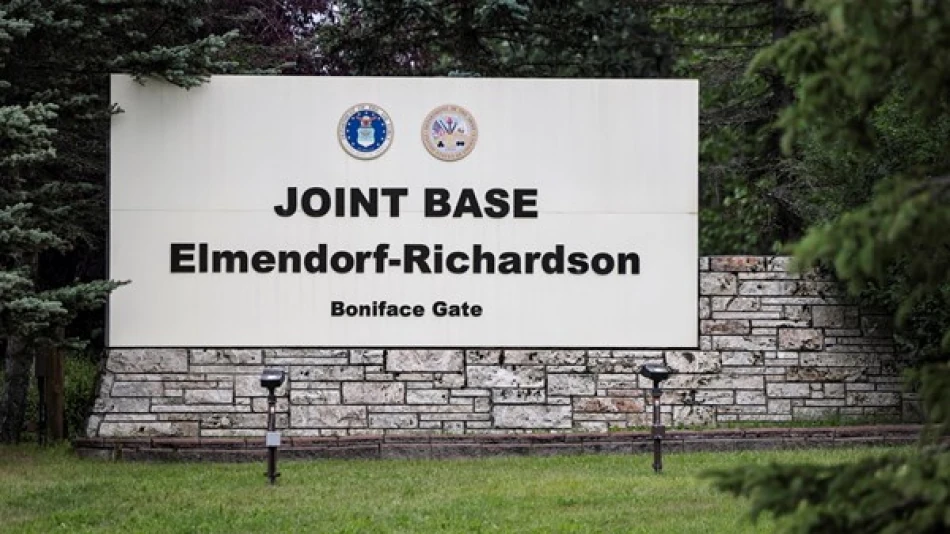
Trump and Putin's Highly Anticipated Summit Location Revealed
Trump-Putin Summit at Cold War Base Signals New Era of Superpower Diplomacy
Presidents Donald Trump and Vladimir Putin are set to meet Friday at a military base near Anchorage, Alaska, in a high-stakes attempt to resolve the Ukraine crisis that has raged since February 2022. The choice of venue—a former Cold War stronghold—sends a deliberate message that this diplomatic engagement breaks from decades of traditional superpower summitry.
Strategic Location Carries Historical Weight
The summit will take place at Joint Base Elmendorf-Richardson, a sprawling military installation with deep roots in U.S.-Russia tensions. Built in the early 1940s, the base initially served as a crucial launching point for American operations against Japan during World War II. Its strategic importance peaked after 1945 as Cold War tensions escalated between the Soviet Union and the United States.
By 1957, approximately 200 fighter aircraft were stationed at Elmendorf and other Alaskan bases, supported by an extensive radar network designed to monitor Soviet activity across the Bering Strait. The military presence gradually declined in subsequent decades due to strategic repositioning during the Vietnam War, but the base retained its significance as Arctic geopolitics gained renewed importance.
Modern Military Powerhouse
Today, the joint base encompasses over 800 buildings, two aircraft runways, and houses roughly 6,000 military personnel, according to Pacific Air Forces data. This massive infrastructure provides the security and logistical framework necessary for a meeting between two nuclear-armed leaders whose nations have been locked in proxy conflict.
Symbolic Departure from Cold War Diplomacy
The venue selection represents more than practical considerations. George Beebe, a former CIA Russia expert now at the Quincy Institute for Responsible Statecraft, argues that Trump is making a deliberate statement by avoiding the neutral territories traditionally favored for superpower summits.
"This isn't a Cold War," Beebe explains Trump's apparent reasoning. "We're not reproducing all those Cold War summits held in neutral countries like Austria, Switzerland, and Finland. We're entering a new era."
Breaking Diplomatic Precedent
Historically, U.S.-Soviet and U.S.-Russian summits have occurred on neutral ground to avoid any perception of advantage. Reagan met Gorbachev in Reykjavik, Geneva, and Malta. Putin and Bush held talks in Slovenia and Slovakia. By choosing American soil—and specifically a military base—Trump appears to be asserting a position of strength while simultaneously offering direct engagement.
High-Stakes Gamble
This approach carries significant risks and potential rewards. Meeting on U.S. territory could be interpreted by Moscow as diplomatic subordination, potentially complicating negotiations before they begin. Conversely, it may signal American confidence and resolve, potentially encouraging more substantive Russian concessions on Ukraine.
Arctic Geopolitics in Focus
The Alaskan setting also highlights the growing importance of Arctic competition between the superpowers. As climate change opens new shipping routes and resource extraction opportunities, both nations have increased their military presence in polar regions. Russia has heavily militarized its Arctic coastline, while the U.S. has responded with enhanced operations from bases like Elmendorf-Richardson.
This geographic context adds another layer to the summit's significance, suggesting that Ukraine may be just one element of a broader strategic realignment between Washington and Moscow. The outcome of Friday's meeting could reshape not only the trajectory of the Ukraine conflict but also the broader framework of U.S.-Russia relations for years to come.
 Layla Al Mansoori
Layla Al Mansoori







